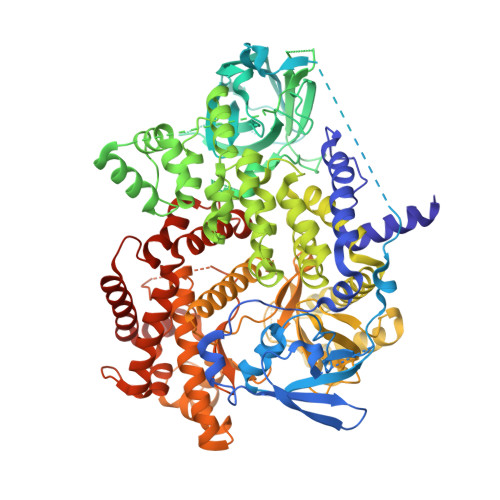Phospshoinositide 3-Kinase (PI3K)/Mammalian Target of Rapamycin (mTOR) Dual Inhibitors: Discovery and Structure-Activity Relationships of a Series of Quinoline and Quinoxaline Derivatives.
Nishimura, N., Siegmund, A., Liu, L., Yang, K., Bryan, M.C., Andrews, K.L., Bo, Y., Booker, S.K., Caenepeel, S., Freeman, D., Liao, H., McCarter, J., Mullady, E.L., San Miguel, T., Subramanian, R., Tamayo, N., Wang, L., Whittington, D.A., Zalameda, L., Zhang, N., Hughes, P.E., Norman, M.H.(2011) J Med Chem 54: 4735-4751
- PubMed: 21612232
- DOI: https://doi.org/10.1021/jm200386s
- Primary Citation of Related Structures:
3S2A - PubMed Abstract:
The phosphoinositide 3-kinase (PI3K) family catalyzes the ATP-dependent phosphorylation of the 3'-hydroxyl group of phosphatidylinositols and plays an important role in cell growth and survival. There is abundant evidence demonstrating that PI3K signaling is dysregulated in many human cancers, suggesting that therapeutics targeting the PI3K pathway may have utility for the treatment of cancer. Our efforts to identify potent, efficacious, and orally available PI3K/mammalian target of rapamycin (mTOR) dual inhibitors resulted in the discovery of a series of substituted quinolines and quinoxalines derivatives. In this report, we describe the structure-activity relationships, selectivity, and pharmacokinetic data of this series and illustrate the in vivo pharmacodynamic and efficacy data for a representative compound.
- Department of Chemistry Research and Discovery, Amgen Inc., Thousand Oaks, California 91320-1799, United States. nobukon@amgen.com
Organizational Affiliation:


















